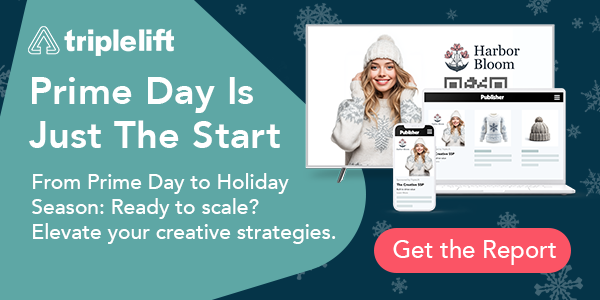With Amazon Prime Day in full force, marketers are navigating one of the biggest retail events of the summer. But this Prime Day isn’t just a moment to drive sales; it’s a critical opportunity to test and learn.
The creative and strategic insights brands gather now can set the tone for success during the all-important holiday season.
The retail media landscape is experiencing amazing growth. According to research by eMarketer, US ad spend is projected to surge 88.5% from 2024 to 2028, reaching over $62 billion in 2025 alone.
Yet, despite this explosive expansion, most marketers are overlooking a critical aspect that’s costing them millions in missed opportunities during peak shopping periods.
The problem hidden in plain sight
The Path to Purchase Institute reports that while 85% of CPG brands now diversify across four or more retail media networks – up nearly 20 points year over year – they’re still applying outdated creative strategies that treat retail media like any other programmatic channel.
TripleLift’s research suggests 48% of marketers lack access to advanced creative technology for quality off-site retail media campaigns. Additionally, 38% struggle to predict consumer interests and shopping trends during critical periods like Amazon Prime Day and the holiday season.
These are strategic blind spots limiting the channel’s true potential.
A multiphase holiday campaign
The most sophisticated retail media strategies recognize that peak shopping periods aren’t monolithic events. They are complex, multiphase journeys requiring distinct creative approaches.
Think of Prime Day as the opening act: an ideal place to test your messaging, creative formats and funnel strategies before the holiday curtain rises. Then, as the holiday season nears, consider this phased approach:
Early phase (September-October): This, we found, is when 77% of marketers implement seasonal shopper segmentation strategies. However, many miss opportunities to build awareness with educational content and gift guides.
Peak phase (November-December): Here is where we found 76% of marketers plan their largest budget increases. Winners understand that urgency messaging and competitive price positioning (price/promotion) become paramount as deal-seekers actively compare options.
Last-minute phase (December): Smart marketers shift messaging to convenience and reliability with shipping deadlines, expedited delivery and click-and-collect options that address procrastinator psychology.
The Prime Day opportunity: Capture learnings right now
Prime Day isn’t just a sales sprint; it’s a simulation for the holiday season. It’s the ultimate testing ground for creative approaches, audience segmentation and full-funnel optimization.
Right now, evaluate which creative formats are driving the strongest engagement. Are your native ads outperforming display? Is video creative resonating better than static images? What does click-through and conversion behavior tell you about your messaging mix? Are you using Amazon Marketing Cloud to improve your targeting, conversion and creative optimization?
These insights will become your competitive advantage when holiday competition intensifies in November and December.
Pay special attention to your audience performance during Prime Day’s lead-out period (continuing through the end of July). The remarketing pools you build now and the sequential messaging strategies you test over the next three weeks will directly inform your holiday segmentation approach when, as we’ve found, 77% of marketers implement seasonal shopper strategies.
Beyond audience targeting: The creative technology revolution
The industry conversation has been dominated by audience targeting and measurement. But the real competitive advantage lies in creative technology. Our research shows that online video (84%) and native advertising (83%) significantly outperform display (46%) and connected TV (26%) during Q4 holiday campaigns.
Too many brands treat retail media as a bottom-funnel conversion play, missing opportunities to build brand equity and customer lifetime value. Creative strategy and innovation should no longer be an afterthought. They are performance levers in their own right. Retail media data should inform the entire full-funnel marketing ecosystem.
The call to action: Elevate your creative standards
The retail media industry stands at an inflection point. As competition intensifies and costs rise – 75% of advertisers tell us they plan to increase spending in 2025 – the brands that will thrive are those that recognize creative innovation as their primary differentiator.
Make retail media creative and planning a first principle. Start building dedicated creative strategies that evolve throughout peak shopping periods, use advanced creative technology and create seamless experiences that feel native to each shopping environment.
The question isn’t whether retail media will continue growing; it’s whether your brand will lead or follow in this creative-driven evolution. The window for competitive advantage is narrowing.
But for marketers willing to embrace creative sophistication, the opportunities have never been greater. And with the growth of generative AI and AI-powered workflows, the tools to support this transformation will only become more powerful and accessible in the year ahead.
Ed Dinichert is chief revenue officer at TripleLift, the leading Creative SSP transforming digital advertising through innovative creative technology and premium programmatic solutions.
















